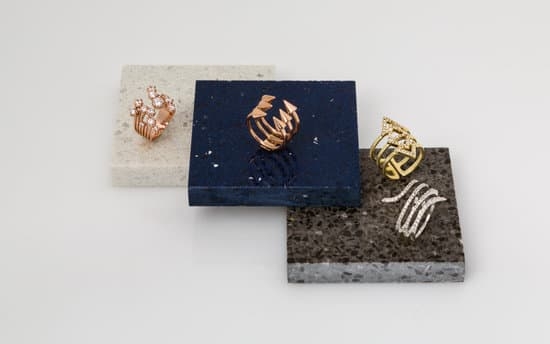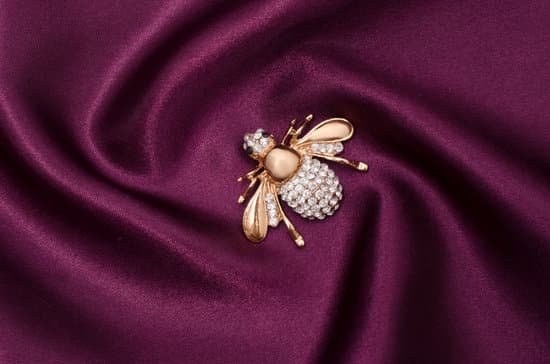Nestled in the heart of Indonesia, Bali is renowned for its picturesque landscapes, vibrant culture, and most notably, its rich tradition of jewelry making. The intricate and unique designs of jewelry handmade in Bali have garnered global attention and admiration for their craftsmanship. From traditional to contemporary pieces, Balinese artisans continuously push the boundaries of creativity, resulting in stunning and timeless creations.
Bali’s jewelry-making tradition dates back centuries and plays a significant role in the island’s cultural heritage. Passed down from generation to generation, the art of handmade jewelry in Bali reflects the island’s deep-rooted traditions and spiritual beliefs. Each piece tells a story and embodies the devotion and skill of its creators.
The intricate art of Balinese jewelry making techniques is a testament to the unparalleled expertise and dedication of its artisans. From filigree work to granulation, these techniques have been honed over generations, resulting in exquisitely detailed pieces that are truly unique. The combination of traditional methods with modern influences showcases the versatility and innovation within Bali’s jewelry-making community.
The History and Cultural Significance of Handmade Jewelry in Bali
Bali, an Indonesian island known for its stunning beaches and vibrant culture, also has a rich tradition of jewelry-making that dates back centuries. The history and cultural significance of handmade jewelry in Bali are deeply intertwined with the island’s Hindu heritage and the influence of various ancient traditions. Balinese jewelry is not just an accessory; it is a reflection of the island’s spirituality, beliefs, and artistic expression.
In Bali, jewelry has always held significant cultural importance. Beyond its aesthetic appeal, jewelry often serves as a symbol of social status, spiritual devotion, and protection. Traditional Balinese jewelry pieces, such as intricately designed silver rings and necklaces adorned with semi-precious stones, are often worn during religious ceremonies and special occasions. These pieces are believed to possess mystical qualities and offer protection from negative energy.
The intricate designs found in Balinese handmade jewelry are inspired by the island’s rich cultural heritage and natural beauty. Traditional motifs such as the Barong (a mythical lion-like creature) and the Lotus flower are often incorporated into the designs as they hold symbolic meanings in Balinese mythology and Hinduism. The artistry involved in creating these pieces demonstrates the deep respect for tradition and craftsmanship that has been passed down through generations of Balinese artisans.
| Traditional Motifs | Cultural Significance |
|---|---|
| Barong | Symbolizes protection from negative energy |
| Lotus Flower | Represents purity and enlightenment in Hinduism |
Exploring the Intricate Art of Balinese Jewelry Making Techniques
Bali is renowned for its rich tradition of jewelry-making, with intricate designs and craftsmanship that have been passed down through generations. The art of creating handmade jewelry in Bali is deeply rooted in the island’s culture and history, making it a unique and treasured form of art.
Balinese jewelry artisans are known for their exceptional skill in using traditional techniques such as granulation, filigree, and minutely detailed carving to create stunning pieces of jewelry. These techniques require years of practice and dedication to master, resulting in one-of-a-kind pieces that reflect the cultural heritage of Bali.
The process of creating handmade jewelry in Bali is a meticulous one, with artisans often working with 18-karat gold and precious gemstones like diamonds, rubies, and emeralds. Silver is also commonly used in Balinese jewelry-making, with highly skilled silversmiths crafting intricate designs with precision and expertise.
Artisans often draw inspiration from nature, mythology, and religious beliefs when designing handmade jewelry in Bali. This results in pieces that are not only visually stunning but also imbued with spiritual significance and cultural meaning. Each piece tells its own story, making Balinese handmade jewelry truly unique.
In recent years, the demand for jewelry handmade in Bali has grown significantly on a global scale as consumers seek out ethically made and sustainable products. The popularity of Balinese handcrafted jewelry can be attributed to its exquisite craftsmanship, cultural significance, and the use of high-quality materials. As a result, Balinese artisans continue to gain recognition for their exceptional talent and contribute to the island’s thriving artisanal community.
| Balinese Jewelry Making Techniques | Details |
|---|---|
| Traditional Techniques | Granulation, filigree, intricately detailed carving |
| Materials Used | 18-karat gold, silver, precious gemstones |
| Inspiration | Nature, mythology, religious beliefs |
The Materials Used in Creating Handmade Jewelry in Bali
Bali’s rich jewelry-making tradition is closely tied to the island’s abundant natural resources and the artisans’ dedication to preserving their cultural heritage. The materials used in creating handmade jewelry in Bali are diverse and hold significance not only in terms of aesthetics but also in their cultural and spiritual meanings. Below are some of the key materials utilized by Balinese jewelry artisans:
- Sterling Silver: One of the primary materials used in Bali’s handmade jewelry, sterling silver is known for its durability, luster, and ability to beautifully showcase intricate designs.
- Gold: Balinese artisans often incorporate gold into their handmade jewelry, symbolizing prosperity, status, and spirituality within the island’s culture.
- Precious Gemstones: From vibrant rubies to sparkling diamonds, Balinese jewelry often features precious gemstones that add a touch of luxury and symbolism to each piece.
- Organic Materials: Bamboo, wood, shells, and coral are frequently incorporated into handmade jewelry in Bali, reflecting the island’s commitment to sustainability and connection to nature.
By skillfully combining these materials with traditional techniques such as granulation and filigree work, Balinese artisans create stunning pieces that not only showcase their exceptional craftsmanship but also pay homage to Bali’s natural beauty and rich cultural heritage.
Ultimately, the use of these diverse materials sets Bali’s handmade jewelry apart from mass-produced accessories. Each piece tells a story through its materials, design elements, and cultural symbolism. When purchasing jewelry handmade in Bali, consumers have the opportunity to own a unique piece of art that reflects both the island’s natural abundance and the artisan’s creative vision.
Spotlight on Talented Balinese Jewelry Artisans and Their Unique Designs
Bali is home to a vibrant and thriving community of talented jewelry artisans, each with their own unique designs that showcase the rich cultural heritage of the island. These skilled craftsmen and women have honed their craft over generations, creating stunning pieces of jewelry that are not only beautiful but also carry deep cultural significance. Here are some talented Balinese jewelry artisans who are making waves with their exceptional designs:
- Putu Putra
- Ketut Rida
- Nyoman Sudana
- Ida Bagus Made
Each of these artisans brings something special to the table, whether it’s through their use of traditional Balinese motifs, innovative techniques, or modern twists on classic designs. Putu Putra, for example, is known for his intricate filigree work, while Ketut Rida incorporates vibrant colored gemstones into her pieces, reflecting the natural beauty of Bali.
Nyoman Sudana draws inspiration from nature and mythology, creating pieces that are steeped in symbolism and tradition. Ida Bagus Made takes a more contemporary approach, blending traditional Balinese techniques with sleek modern designs.
The jewelry handmade in Bali by these talented artisans not only showcases their remarkable skill and creativity but also serves as a testament to the rich cultural tapestry of the island. Each piece tells a story and represents a legacy of craftsmanship that has been passed down through generations. As these artisans continue to innovate and push boundaries, they ensure that the tradition of handmade jewelry in Bali remains alive and thriving for years to come.
The Ethical and Sustainable Practices of Handmade Jewelry Production in Bali
Bali is not only known for its stunning beaches and lush landscapes, but also for its rich tradition of handmade jewelry making. In recent years, there has been a growing emphasis on ethical and sustainable practices within the Balinese jewelry industry. This shift towards more responsible production has been driven by a desire to preserve the environment, support local communities, and provide consumers with jewelry that they can feel good about wearing.
Supporting Local Artisans
One of the key aspects of ethical jewelry production in Bali is the support of local artisans. Many jewelry workshops and cooperatives in Bali are dedicated to providing fair wages, safe working conditions, and opportunities for skill development to their artisans. By purchasing handmade jewelry from Bali, consumers can directly support these talented individuals and help to preserve traditional craftsmanship.
Environmentally Friendly Practices
In addition to supporting local artisans, ethical jewelry production in Bali also focuses on environmental sustainability. Many jewelry makers in Bali are conscious of their impact on the environment and strive to implement eco-friendly practices in their production processes. This includes using recycled metals, responsibly sourcing gemstones, and minimizing waste through efficient production techniques.
Community Empowerment
Furthermore, ethical jewelry production in Bali often prioritizes community empowerment. Whether it’s through providing education and training programs or collaborating with local organizations, the industry is committed to uplifting the communities that are involved in the creation of handmade jewelry. By purchasing jewelry from these ethical producers, consumers can contribute to positive social impact in Bali.
With an increasing global demand for ethically produced goods, including handmade jewelry from Bali, it’s evident that consumers are becoming more mindful of the impact of their purchases. By choosing jewelry made with ethical and sustainable practices at heart, individuals can not only adorn themselves with beautiful pieces but also contribute to meaningful change in the industry.
The Popularity and Global Demand for Bali’s Handmade Jewelry
Bali’s handmade jewelry has gained immense popularity and global demand in recent years. The exquisite craftsmanship, unique designs, and cultural significance of Balinese jewelry have contributed to its rising popularity among consumers worldwide.
Global Fashion and Jewelry Trends
The global fashion industry has played a significant role in the increasing demand for Bali’s handmade jewelry. Many international designers and fashion houses are incorporating Balinese-inspired jewelry into their collections, further fueling the popularity of these beautiful pieces. The trend of minimalist and bohemian styles has also seen a surge in demand for Bali’s handmade jewelry, as it perfectly complements these fashion aesthetics.
Online Marketplaces and Social Media
The rise of e-commerce platforms and social media has made it easier for consumers to discover and purchase handmade jewelry from Bali. Many talented Balinese artisans have established their online presence, showcasing their stunning creations to a global audience. The accessibility of these platforms has contributed to the increased visibility and demand for Bali’s handmade jewelry, making it easier for consumers to access and purchase these unique pieces.
Cultural Appreciation
In addition to fashion trends and online accessibility, there is a growing appreciation for the cultural significance behind Bali’s handmade jewelry. Consumers are increasingly drawn to the stories and traditions behind these intricate pieces, leading them to seek out authentic Balinese craftsmanship. This cultural appreciation has led to a surge in demand for handcrafted jewelry that not only showcases artistic skill but also preserves the heritage and tradition of Balinese artisans.
As the global market continues to appreciate the beauty and artistry of Bali’s handmade jewelry, it is clear that this age-old tradition will continue to thrive on an international scale.
Tips for Purchasing and Caring for Handmade Jewelry From Bali
When it comes to purchasing and caring for handmade jewelry from Bali, there are a few important tips to keep in mind. First and foremost, it’s crucial to support ethical and sustainable practices. Look for artisans and retailers who prioritize fair labor practices, use eco-friendly materials, and contribute to the local community. By doing so, you can feel good about the impact of your purchase while also owning a beautiful piece of jewelry.
Another important tip is to do your research before making a purchase. Learn about the different techniques and materials used in Balinese jewelry making, as well as the cultural significance behind certain designs. This will not only enhance your appreciation for the jewelry but also ensure that you are investing in an authentic piece of Balinese craftsmanship.
When it comes to caring for your handmade jewelry from Bali, proper maintenance is key. Be sure to follow any specific care instructions provided by the artisan or retailer. In general, it’s important to keep your jewelry away from chemicals, moisture, and extreme temperatures.
Additionally, regular cleaning with a soft cloth and gentle soap can help preserve the beauty of your Balinese jewelry for years to come. With these tips in mind, you can continue to cherish and enjoy your handmade treasures from Bali.
Conclusion
In conclusion, the art of handmade jewelry in Bali is a time-honored tradition that holds significant cultural and historical importance. The intricate techniques and designs showcase the immense skill and creativity of Balinese artisans, making each piece truly unique and special. The use of traditional materials such as silver, gold, and precious stones adds an extra layer of authenticity and value to these beautiful creations.
The ethical and sustainable practices employed in the production of handmade jewelry in Bali further contribute to the allure of these pieces. With a focus on environmental responsibility and fair labor practices, consumers can feel good about supporting the artisans and communities behind their favorite jewelry pieces. This commitment to sustainability aligns perfectly with the growing global demand for ethically sourced products.
As interest in Balinese handmade jewelry continues to rise worldwide, it’s important for consumers to be mindful when purchasing these items. By understanding the significance of Balinese jewelry making traditions, as well as learning how to properly care for these pieces, individuals can fully appreciate the beauty and craftsmanship of jewelry handmade in Bali.
Embracing this art form not only allows us to adorn ourselves with stunning accessories but also enables us to partake in preserving a rich cultural legacy.
Frequently Asked Questions
Is Bali Good for Jewelry?
Bali is renowned for its intricate and beautiful jewelry designs, making it a popular destination for jewelry enthusiasts. The skilled artisans in Bali create unique and high-quality jewelry pieces using traditional techniques.
Is Bali Silver Real Silver?
Yes, Bali silver is indeed real silver. It is typically made from sterling silver, which contains 92.5% pure silver and 7.5% other metals to enhance its durability and strength. This gives Bali silver its distinctive shine and quality.
Does Bali Silver Tarnish?
Like any sterling silver jewelry, Bali silver can tarnish over time due to exposure to air, moisture, and chemicals. However, proper care and maintenance can help prevent or reduce tarnishing. Regular cleaning and storing the jewelry in airtight containers when not in use can prolong its shine and luster.

Welcome to my jewelry blog! My name is Sarah and I am the owner of this blog.
I love making jewelry and sharing my creations with others.
So whether you’re someone who loves wearing jewelry yourself or simply enjoys learning about it, be sure to check out my blog for insightful posts on everything related to this exciting topic!





